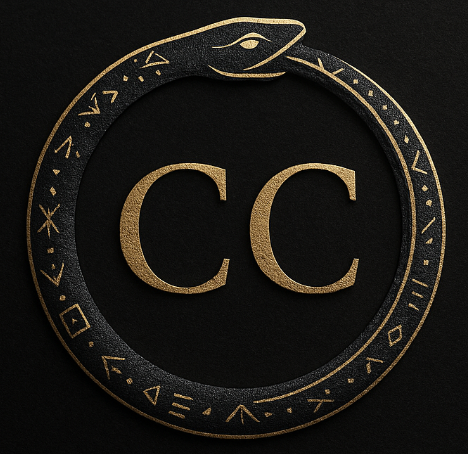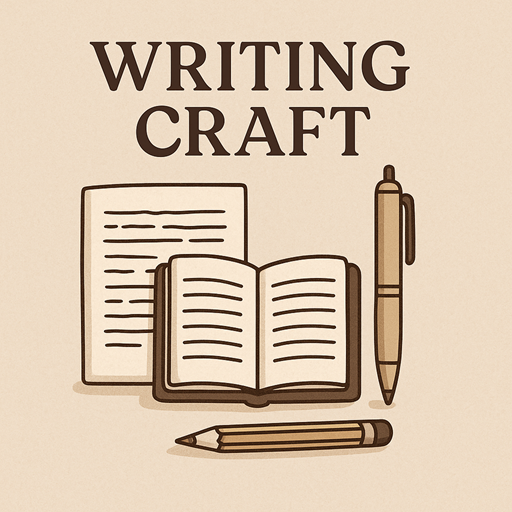How an Ancient System of Self-Understanding Can Supercharge Your Storytelling
“The best stories aren’t about characters who change—they’re about characters who wake up.”
What if you had a map—not just for your characters’ personalities, but for their shadows, stress responses, and potential for transformation?
Enter the Enneagram: an ancient, mystically-infused typology system that goes beyond surface traits and gets right to the soul of your characters.
Whether you’re writing a gritty detective in crisis, a chosen-one fantasy hero, or a literary novel about grief, the Enneagram can help you craft arcs that are not only emotionally authentic but psychologically resonant.
Let’s dig in.
What Is the Enneagram?
The word Enneagram comes from the Greek words ennea (nine) and gramma (something written or drawn). It’s an ancient symbol with mysterious roots, with early forms possibly traced back to Sufi mysticism and early Christian desert fathers. It was reintroduced to the modern world through the teachings of mystic G.I. Gurdjieff, then expanded by Oscar Ichazo and Claudio Naranjo—two spiritual psychologists who infused it with typological depth.
Unlike the Myers-Briggs or other personality tests, the Enneagram isn’t about what you do, but why you do it. It centers on core motivation, ego fixations, and the spiritual wound at the heart of each type. And that’s where the gold is for writers.
Why It’s a Game-Changer for Character Development
The Enneagram gives you:
- An inner conflict that’s always present
- A fear that drives decisions (especially under pressure)
- A hidden gift that’s only unlocked through growth
- Predictable behavior shifts under stress or security
- A built-in arc from ego to essence
This is character development made organic. No need to artificially engineer flaws or growth. Each type contains its own pressure points, defenses, compulsions—and the exact medicine it needs for transformation.
The 9 Types (Quick Overview for Writers)
Here’s a breakdown with writing-specific lenses to help you quickly imagine how each might shape your characters.
Type 1: The Reformer
- Core Fear: Being corrupt, wrong, defective
- Core Desire: To be good, right, and have integrity
- Stress Reaction: Becomes judgmental or hypercritical
- Growth Gift: Becomes wise, accepting, and principled
- Story Arc: From rigid moralist to integrated truth-seeker
- Perfect for: Idealistic mentors, flawed leaders, moral crusaders
Type 2: The Helper
- Core Fear: Being unwanted or unloved
- Core Desire: To be loved and needed
- Stress Reaction: Becomes manipulative or martyr-like
- Growth Gift: Offers love without needing validation
- Story Arc: From self-sacrifice to true self-worth
- Perfect for: Caretakers, healers, emotionally enmeshed lovers
Type 3: The Achiever
- Core Fear: Being worthless or a failure
- Core Desire: To feel valuable and successful
- Stress Reaction: Overworks, image-obsessed
- Growth Gift: Authenticity beyond performance
- Story Arc: From mask-wearer to soul-speaker
- Perfect for: Politicians, influencers, ambitious protagonists
Type 4: The Individualist
- Core Fear: Having no identity or significance
- Core Desire: To be unique and authentic
- Stress Reaction: Withdraws into melancholy
- Growth Gift: Deep creative and emotional clarity
- Story Arc: From tragic outsider to soulful creator
- Perfect for: Artists, haunted visionaries, sensitive seers
Type 5: The Investigator
- Core Fear: Being helpless or overwhelmed
- Core Desire: To be competent and capable
- Stress Reaction: Withholds energy, isolates
- Growth Gift: Becomes generous with insights and presence
- Story Arc: From aloof analyst to wise contributor
- Perfect for: Detectives, scientists, sages, hermits
Type 6: The Loyalist
- Core Fear: Being without support or guidance
- Core Desire: To feel secure and safe
- Stress Reaction: Becomes anxious or controlling
- Growth Gift: Courage rooted in trust
- Story Arc: From fear-driven skeptic to brave loyal guardian
- Perfect for: Sidekicks, strategists, protectors
Type 7: The Enthusiast
- Core Fear: Being trapped in pain or deprivation
- Core Desire: To be satisfied and free
- Stress Reaction: Escapes into distraction, overindulges
- Growth Gift: Present-moment joy and deep commitment
- Story Arc: From pleasure-chaser to depth-embracer
- Perfect for: Tricksters, rebels, adventurers
Type 8: The Challenger
- Core Fear: Being controlled or vulnerable
- Core Desire: To protect themselves and those they love
- Stress Reaction: Domineering or aggressive
- Growth Gift: Becomes a powerful advocate for justice
- Story Arc: From tyrant to protector
- Perfect for: Warriors, CEOs, resistance leaders
Type 9: The Peacemaker
- Core Fear: Loss of connection or conflict
- Core Desire: To have inner and outer peace
- Stress Reaction: Shuts down, avoids decisions
- Growth Gift: Embodied calm and powerful presence
- Story Arc: From avoider to integrator
- Perfect for: Reluctant heroes, mediators, intuitive empaths
Using the Enneagram to Craft Arcs
- Start with the wound.
What is your character afraid of losing, being, or feeling? Their Enneagram type will show you. - Put them under pressure.
When stressed, each type defaults to predictable reactions. You’ll know exactly how they spiral—and what kind of plot can trigger that spiral. - Show growth through contradiction.
A 3 stops performing. A 5 opens up. A 1 relaxes their standards. The character arc is built into the structure of the type itself. - Pair types for dynamic relationships.
A conflict between a skeptical 6 and a visionary 4? Gold. A 2 giving to a self-sufficient 8? Instant tension.
Where to Go Deeper
Here are some of the most insightful books on using the Enneagram as a spiritual and psychological tool—not just for character, but for yourself:
- Keys to the Enneagram: How to Unlock the Highest potential of Every Personality Type by A.H. Almaas
- The Spiritual Dimension of the Enneagram by Sandra Maitri
- Facets of Unity by A.H. Almaas (a more mystical, depth psychology approach)
- The Wisdom of the Enneagram by Riso & Hudson (accessible + comprehensive)
Final Thoughts
The best characters don’t just solve external problems—they wake up to themselves. The Enneagram gives you a map for this kind of storytelling. It’s not a hack. It’s a mirror.
And when you hold that mirror up to your characters?
They become real.



